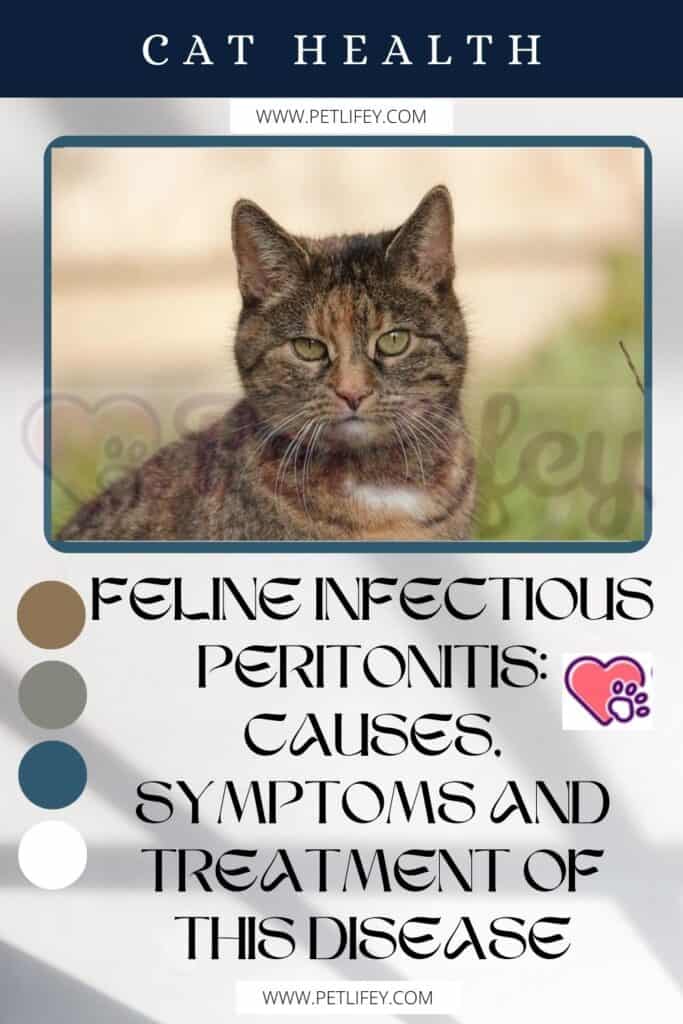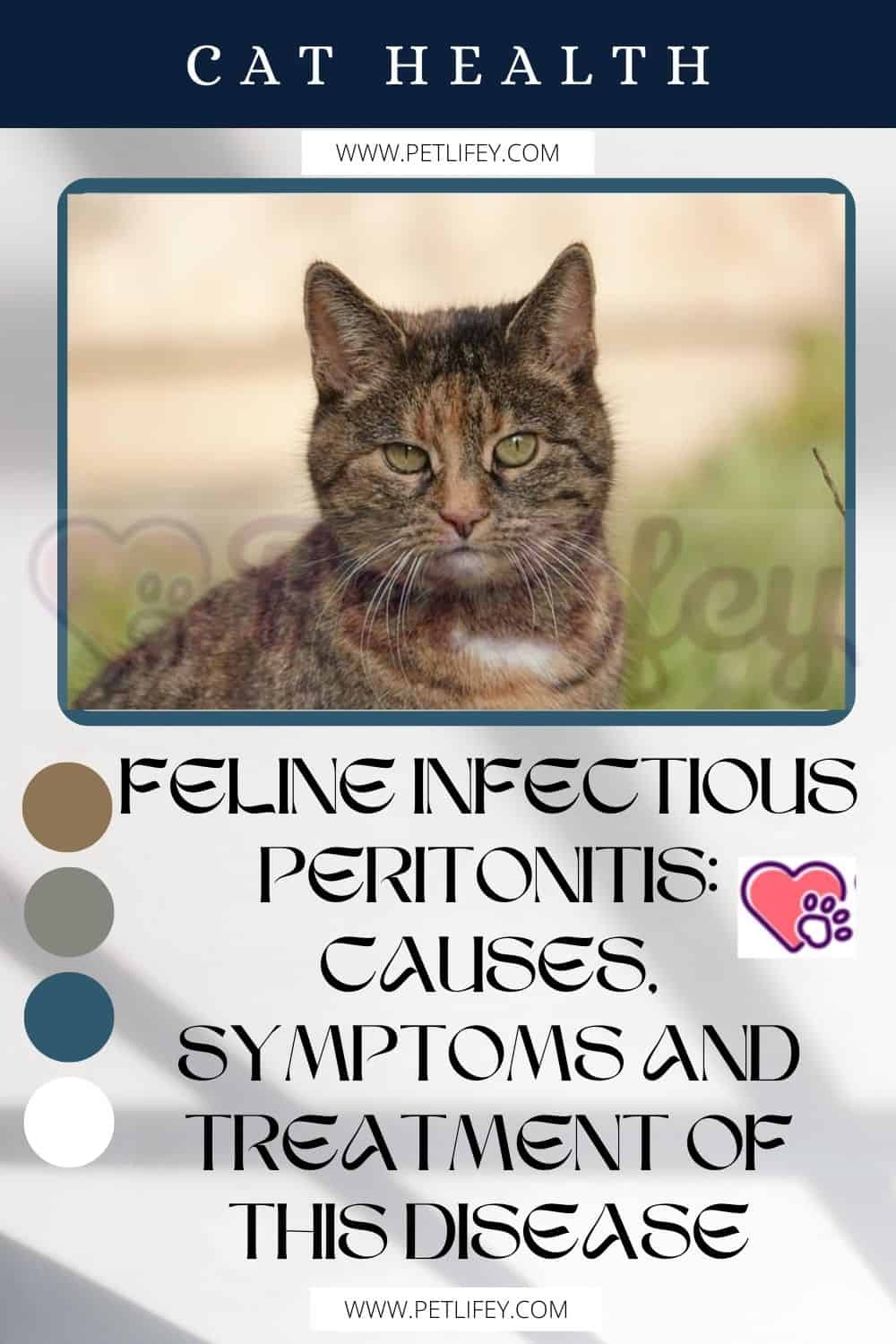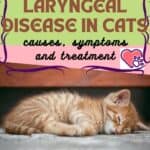Feline Infectious Peritonitis: Unveiling the Causes, Symptoms, and Treatment Options

Feline Infectious Peritonitis (FIP) is a serious and complex disease that affects cats. It’s caused by a strain of the feline coronavirus. While most strains of this virus are harmless or cause mild intestinal disease, in rare cases, the virus can mutate into a form that leads to FIP. This mutation can transform the benign virus into a fatal one, indicating the unpredictable nature of this condition.
When your cat is afflicted with FIP, you may notice a range of symptoms. The disease can present in a “wet” form, where fluid builds up in the abdomen or chest, or a “dry” form, which affects various organ systems with inflammatory lesions. You might see signs like lethargy, appetite loss, weight loss, fever, and for the “wet” form, a swollen belly due to fluid accumulation.
As of the current understanding, there are no definitive cures for FIP, but treatments have evolved significantly. Recent advances have led to antiviral medications that show promising results, giving hope to extending the lifespan and quality of life for affected cats. Managing FIP requires close collaboration with your veterinarian to monitor your cat’s condition and adjust supportive care as needed.
What Is Feline Infectious Peritonitis?
Feline Infectious Peritonitis (FIP) is a serious, viral disease that affects cats. It’s caused by a mutation of the feline coronavirus. While many cats are exposed to the feline coronavirus, only a few develop FIP when the virus mutates into a version capable of causing a widespread systemic infection.
Transmission and Mutation:
- Feline coronavirus (FCoV): Often benign and present in the gastrointestinal tract.
- Mutation: Feline coronavirus mutates into FIP virus (FIPV).
- Virus: The mutated virus, FIPV, leads to FIP.
Significant Characteristics:
- Species specific: Affects only cats, not transmissible to humans or other animals.
- Age factor: More common in young cats, typically under two years of age.
There are two forms of FIP, both of which involve complex immune system reactions:
- Effusive (Wet FIP): Characterized by fluid accumulation in the abdomen or chest.
- Noneffusive (Dry FIP): Involves inflammation and lesions on organs.
Symptoms can include but are not limited to:
- Weight loss
- Lethargy
- Fever
- Loss of appetite
- Difficulty breathing (in the case of fluid accumulation)
Prognosis and Treatment: FIP has been historically challenging to treat, often resulting in a fatal outcome. However, research has led to treatments that can extend lifespan and, in some instances, lead to remission.
- Treatment: Antiviral drugs, supportive care, and, in some cases, immunosuppressive drugs.
- Research: Ongoing, aiming for better treatment options and outcomes.
It is crucial to consult a veterinarian for diagnosis and management if you suspect your cat may have FIP.
Causes and Transmission of FIP
Understanding how Feline Infectious Peritonitis (FIP) arises and is transmitted is crucial for preventing the spread of this serious disease in cats. The transformation of a typically harmless virus into a fatal form stands at the heart of FIP’s development.
Origins of Feline Coronavirus
Feline coronavirus (FCoV) is a common virus that infects cats, often without causing significant illness. This virus belongs to the family Coronaviridae and exists in many cats’ intestinal tracts. Transmission typically occurs through feces, with litter boxes being a common point of exposure. Healthy cats become carriers when they ingest virus particles shed by infected cats.
Mutation to FIPV
At times, the harmless feline enteric coronavirus can mutate into a lethal variant known as FIP virus (FIPV). When this mutation occurs, the virus triggers FIP by gaining the ability to infect certain white blood cells, leading to a systemic and often fatal condition. This change from a benign to a virulent form can happen inside your cat’s body, particularly when their immune system is compromised.
Risk Factors for FIP
Several factors can increase your cat’s risk of contracting FIP. Cats living in high-density environments such as shelters or catteries are at higher risk due to the close contact with other felines. Stress and young age can also predispose cats to FIP, as both can affect the immune response adversely, making them more susceptible to diseases. Other factors that can contribute include genetics and the presence of other illnesses that can weaken a cat’s immune defense.
Recognizing the Signs and Symptoms
Being aware of the early signs and symptoms of Feline Infectious Peritonitis can aid in early detection and management. The disease manifests in two main forms, wet (effusive) and dry (noneffusive), each presenting distinct clinical signs.
Early Stages
In the initial stages of FIP, your cat may exhibit nonspecific symptoms that could easily be mistaken for other illnesses. Common early signs include:
- Fever: Persistent fever not responsive to antibiotics
- Weight Loss: Noticeable and progressive weight loss despite normal eating habits
- Loss of Appetite: Reduced interest in food
- Lethargy: Decreased activity levels and increased fatigue
Progression to Wet or Dry Form
FIP can develop into either the wet or dry form, with specific symptoms pertaining to each.
Wet (Effusive) Form: This type presents more dramatic signs due to fluid accumulation.
- Abdomen: Development of a pot-bellied appearance due to fluid build-up
- Difficulty Breathing: Caused by fluid compressing the lungs
- Ocular Symptoms: Inflammation and discharge from the eyes
Dry (Non-effusive) Form: The dry form leads to symptoms associated with organ inflammation.
- Kidney & Liver: Jaundice, a sign of liver involvement, or increased thirst and urination indicating kidney dysfunction
- Eyes: Changes in the eyes, which may include inflammation or cloudiness
- Brain: Neurological signs such as seizures or behavioral changes
Diarrhea may occur in either form, but it is more common and severe in the wet form due to abdominal discomfort and pressure on the intestines. Each cat’s experience of FIP is unique, and symptoms can overlap between forms or change as the disease progresses.
Diagnostic Procedures
To diagnose Feline Infectious Peritonitis (FIP), veterinarians rely on a combination of clinical evaluation and specialized tests. Accurate diagnosis is crucial as FIP can mimic other diseases.
Physical Examination
Your veterinarian will begin with a comprehensive physical exam to check for signs suggestive of FIP, such as abdominal swelling or difficulty breathing. They will assess the condition of your cat’s gastrointestinal tract, lymph nodes, eyes, and blood vessels for irregularities that may indicate FIP.
Laboratory Tests
Blood Tests
A complete blood count (CBC) and a biochemical profile will often be conducted to evaluate the overall health of your cat. These tests can reveal:
- Anemia
- Elevated protein levels, particularly globulins
- Decreased albumin-to-globulin ratio
A definitive diagnosis of FIP may include a PCR (polymerase chain reaction) test that detects feline coronavirus genetic material in blood, tissues, or body fluids. However, PCR cannot differentiate between viral strains, making it a piece of the diagnostic puzzle rather than a conclusive test.
Serology
Your veterinarian may also run serologic tests to detect antibodies to the feline coronavirus. However, the presence of antibodies alone does not confirm FIP, as they can be due to benign forms of the virus.
Biopsy
In cases where a diagnosis is still uncertain, a biopsy of affected tissues may be necessary. Histopathological examination of these tissues, often from the gastrointestinal tract or lymph nodes, can help in diagnosing FIP.
Imaging Techniques
X-ray
X-rays can be useful in identifying changes in the chest and abdominal cavities, such as fluid accumulation or organ enlargement that may be indicative of FIP.
Ultrasound
An ultrasound examination provides a more detailed view, allowing for assessment of internal organs and enabling precise guidance for fluid or tissue sampling without invasive surgery.
This array of diagnostic tools will guide your veterinarian in making an informed diagnosis, as FIP is a complex disease with symptoms similar to many other conditions.
Treatment Options and Management
Feline Infectious Peritonitis (FIP) is a challenging disease, and although there is no guaranteed cure, certain treatments and management strategies can prolong the quality of life for affected cats. Your veterinarian will likely discuss antiviral drugs, immunomodulators, and supportive care as potential therapies.
Medications Used for Treatment
Antiviral Drugs: Researchers have investigated various antiviral medications to specifically target the virus responsible for FIP. These include:
- GS-441524: A nucleoside analogue that inhibits viral replication.
- GC376: A protease inhibitor that interferes with the virus’s ability to replicate.
It is crucial to consult with your veterinarian to understand the appropriate usage and dosage for these medications, as they are still subject to ongoing research and have limited availability.
Immunomodulators: These agents are designed to regulate your cat’s immune response, potentially reducing inflammation and providing relief from symptoms. However, their efficacy varies, and they must be used under vet supervision.
Interferons: These are proteins that may have antiviral effects and are sometimes used in FIP management.
Supportive Care and Surgery
Supportive Care: For managing FIP, providing supportive care is essential. This includes:
- Maintaining hydration through fluids.
- Nutritional support, possibly with a feeding tube if your cat is not eating.
- Pain management with appropriate analgesics.
Supportive care aims to keep your cat comfortable and can be beneficial irrespective of other treatments.
Surgery: In certain cases of effusive FIP where fluid accumulates in the abdomen or chest, your veterinarian may perform surgery to remove excess fluids. This procedure can provide temporary relief from symptoms.
The prognosis for cats with FIP has historically been poor, but with advancements in treatment, some cats may respond to therapy and manage a better quality of life for varying periods. Regular follow-ups with your veterinarian are essential to monitor your cat’s response to treatment and adjust strategies as needed.
Prevention and Control
Preventing Feline Infectious Peritonitis (FIP) crucially involves understanding the disease’s transmission and taking steps to mitigate risk among cats, particularly in multi-cat environments or households.
Vaccination and Guidelines
There is currently no widely approved vaccine for Feline Infectious Peritonitis that is recognized by the American Association of Feline Practitioners (AAFP). However, research is ongoing and future advancements may provide effective vaccination options. In lieu of a vaccine, you should follow preventive guidelines which include:
- Regular veterinary check-ups to maintain overall feline health.
- Isolation of infected cats to prevent the spread to other cats, especially kittens and young cats who are more susceptible.
Management of Feline Populations
Managing feline populations to control the spread of FIP is key. For multi-cat households or shelters:
- Practice good hygiene by regularly cleaning litter boxes to reduce fecal-oral transmission, as FIP can be contracted from exposure to an infected cat’s feces.
- Separate any identified carrier cats to minimize infection risks, understanding that carriers can appear healthy but still spread the virus.
- Implement routine testing and observation to quickly identify and isolate cases of FIP, especially in young cats who are at higher risk.
Impact of FIP on Feline Health
Feline Infectious Peritonitis (FIP) is a serious disease that can be fatal for cats. It affects your cat’s internal organs and tissue, leading to a compromised quality of life. Understanding the prognosis and contemplating euthanasia are difficult aspects you may need to consider.
Prognosis of the Disease
Your cat’s prognosis with FIP is largely influenced by the form of the disease and the strength of its immune response. The immune system’s overreaction is devastating, often resulting in an accumulation of fluids in body cavities and inflammation of tissues. With its ability to impact crucial organ systems dramatically, including kidneys, liver, and brain, untreated FIP has historically been considered fatal. However, recent advances in antiviral drugs have shown promise, with some cats responding well to treatment and going into remission.
Recent Developments:
- Antiviral Treatments: Newly-approved drugs have been successful in curing thousands of cats, dramatically improving the previously grim prognosis.
- Ongoing Research: Continual studies are essential to better understand the virus and refine treatment options.
Considerations for Euthanasia
Should your cat’s quality of life significantly deteriorate due to FIP, you may be faced with the decision of euthanasia. This heart-wrenching choice often comes down to several factors:
- Quality of Life: Persistent pain, difficulty breathing, and severe neurological signs may indicate a poor quality of life.
- Response to Treatment: Lack of improvement despite treatment warrants a serious discussion about humane options.
It is critical for you to work closely with your veterinarian to monitor your cat’s condition and decide on the best course of action for their well-being.
Frequently Asked Questions
In this section, you’ll find specific information addressing concerns about the relationship between FIP and Covid-19.
Concerns of FIP and Covid-19
You may wonder if there is a connection between FIPV, the virus that causes Feline Infectious Peritonitis in cats, and Covid-19, which affects humans. Considering both are caused by viruses from the coronavirus family, your apprehension is understandable. Here is what you need to know:
- Is FIPV related to the Covid-19 virus? FIPV (Feline Infectious Peritonitis Virus) and the Covid-19 virus are distantly related as both belong to the coronavirus family but are different viruses. FIPV is specific to felines and does not infect humans, while the Covid-19 virus, known as SARS-CoV-2, primarily infects humans.
- Can cats with FIPV transmit Covid-19? No, cats with FIPV cannot transmit Covid-19 to humans. FIPV and SARS-CoV-2 are separate viruses, and there’s no evidence to suggest that FIPV can cause Covid-19 in humans or vice versa.
Keep in mind that while FIPV and SARS-CoV-2 are coronaviruses, they each affect different species and are not interchangeable. Your concern for your pet and your health is crucial, but it’s important to direct your worries through informed channels based on scientific evidence.
Emerging Research and Future Directions
This section explores the latest advancements and prospective paths in the battle against Feline Infectious Peritonitis. You will find focused discussions on genetic factors influencing the disease, as well as developments in FDA-sanctioned medical therapeutics.
Genetic Studies
Research in genetic factors has intensified, centering on how specific mutations may predispose cats to FIP. The goal is to comprehend the intricate genetic interactions that facilitate the mutation of benign feline coronavirus into the lethal FIP form. Understanding these genetic underpinnings offers a promising avenue for early detection and preventative strategies, potentially decreasing the prevalence of FIP in feline populations.
FDA-Approved Treatments
The advent of therapies approved by the U.S. Food and Drug Administration (FDA) marks a pivotal turn in FIP treatment. As of now, there are ongoing clinical trials assessing the efficacy and safety of antiviral drugs that target FIP-causing viruses. Such therapies are aimed at inhibiting viral replication and enhancing the immune response. Successful FDA approval of these treatments can significantly alter the prognosis of FIP-afflicted cats, transforming this once-fatal disease into a manageable condition.







